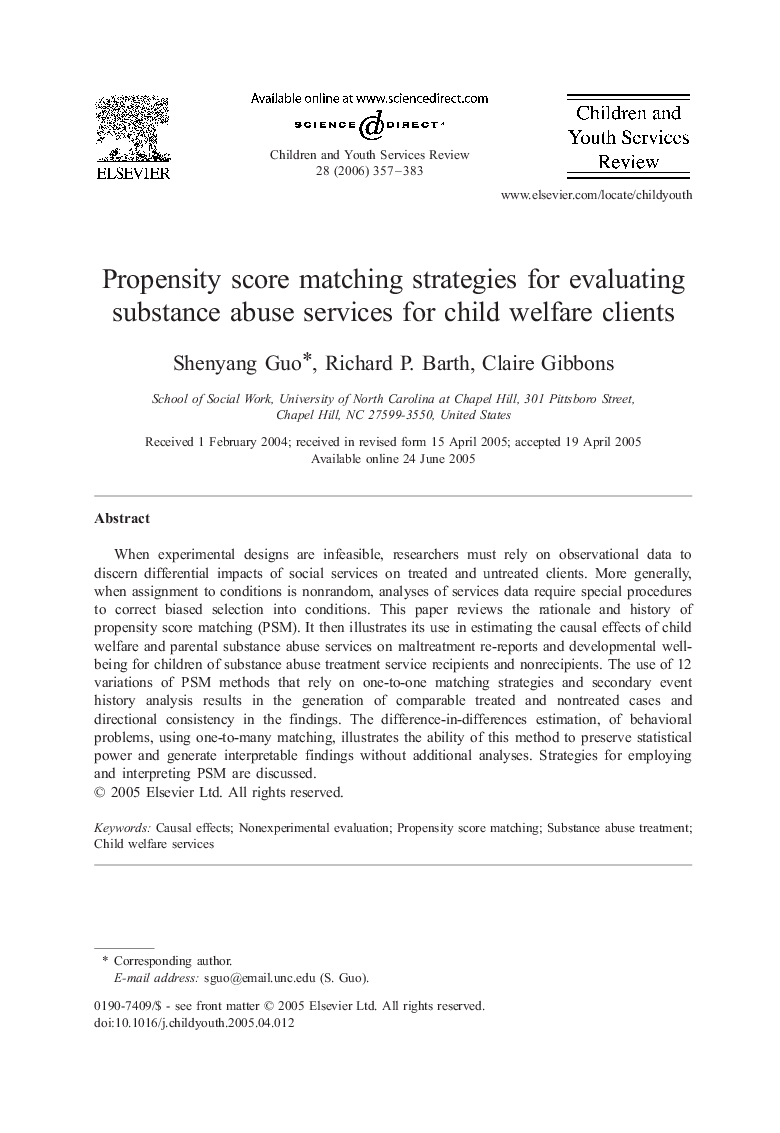| Article ID | Journal | Published Year | Pages | File Type |
|---|---|---|---|---|
| 347373 | Children and Youth Services Review | 2006 | 27 Pages |
When experimental designs are infeasible, researchers must rely on observational data to discern differential impacts of social services on treated and untreated clients. More generally, when assignment to conditions is nonrandom, analyses of services data require special procedures to correct biased selection into conditions. This paper reviews the rationale and history of propensity score matching (PSM). It then illustrates its use in estimating the causal effects of child welfare and parental substance abuse services on maltreatment re-reports and developmental well-being for children of substance abuse treatment service recipients and nonrecipients. The use of 12 variations of PSM methods that rely on one-to-one matching strategies and secondary event history analysis results in the generation of comparable treated and nontreated cases and directional consistency in the findings. The difference-in-differences estimation, of behavioral problems, using one-to-many matching, illustrates the ability of this method to preserve statistical power and generate interpretable findings without additional analyses. Strategies for employing and interpreting PSM are discussed.
